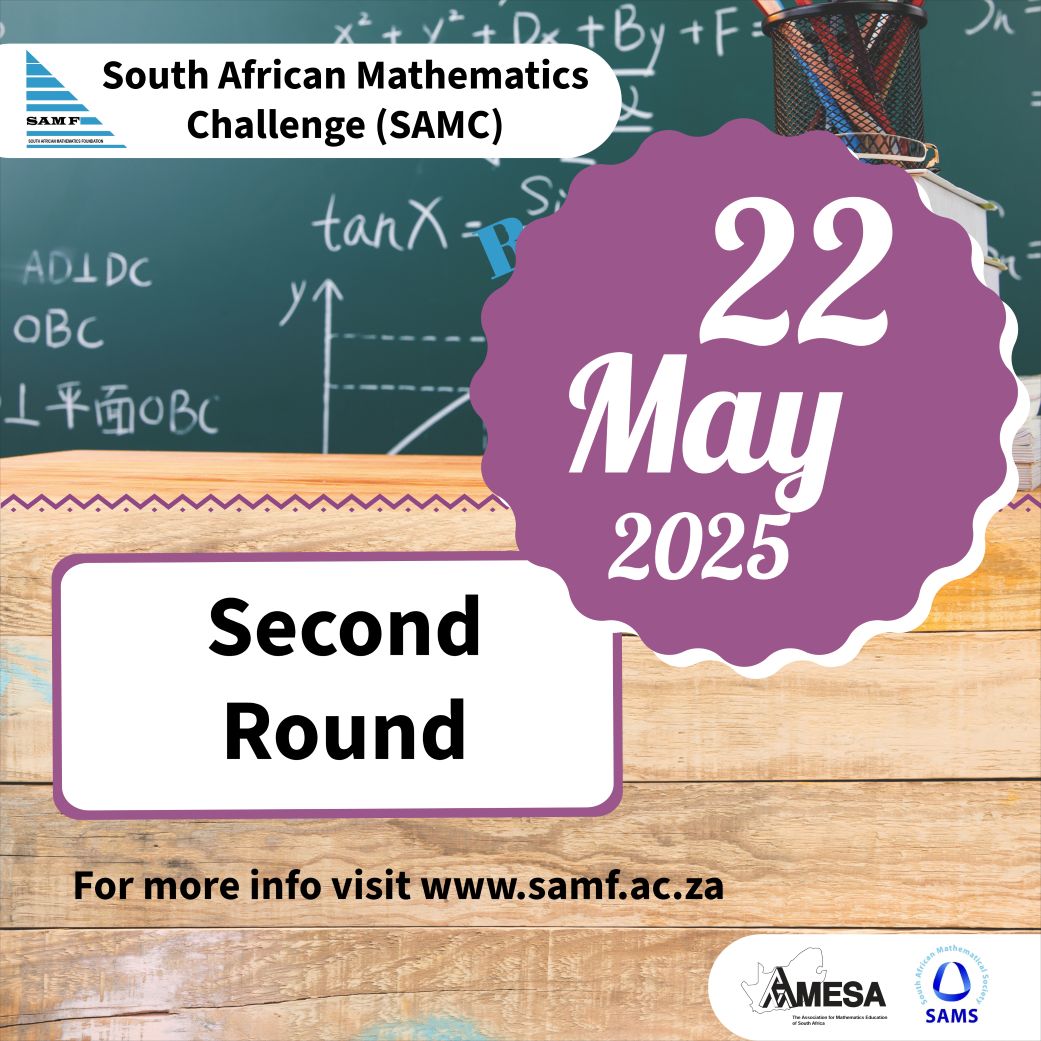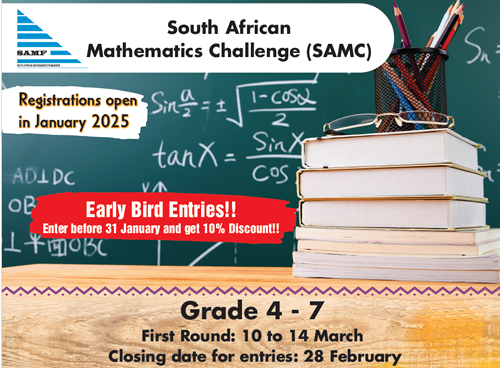Search
South African Mathematics Challenge
Entries for the 2025 event are open
Welcome to the South African Mathematics Challenge (SAMC) – an extraordinary opportunity to push the boundaries of mathematical thinking. Designed to challenge learners in Grades 4 to 7, SAMC takes a unique approach beyond the conventional curriculum.
Key Features:
- Unleash the Potential: SAMC is not your typical maths competition. It's designed to push the limits of Grade 4 to 7 learners, encouraging them to explore beyond the confines of the standard curriculum.
- Triumph through Three Rounds:: Embark on a thrilling journey across three rounds, each more challenging than the last. SAMC is not just a competition; it's an adventure in mathematical exploration.
Benefits for Learners:
- Strengthgening Problem-Solving Skills: Engage learners in a thrilling challenge that goes beyond conventional problem-solving. SAMC's unique approach in Round 1 encourages students to challenge themselves, making problem-solving both enjoyable and team-oriented.
- Building Confidence for Future Competitions: Participating in SAMC allows learners to gain confidence in their problem-solving abilities. This newfound confidence becomes a catalyst, inspiring them to actively pursue and excel in future mathematics competitions.
- Developing Essential Soft Skills: SAMC not only focuses on mathematical prowess but also nurtures essential soft skills. Learners acquire valuable skills such as time management, effective preparation strategies, and a positive mental attitude towards competitions.
Competition Format:
- Learners write the First Round at each participating school normally during a week in March. There are two categories of participation: Confident learners may prefer to participate as individuals (singles), whilst others may choose to work in pairs (doubles). The papers are distributed only via e-mail to schools. Schools must make copies of the documents for their learners. There are separate papers for each grade and the duration of the papers is one hour.
- Learners who achieved at least 50% (10 or more out of 20) in the First Round write the Second Round. Learners only participate as singles. There are again separate multiple-choice papers for each grade and the duration is one hour.
- The best-performing learners from the Second Round write the Third (and Final) Round at centralised venues. There are two papers: Grades 4-5 learners write the Junior paper and Grades 6-7 learners write the Senior paper. Learners have 90 minutes to solve 15 challenging mathematical problems.
Contact Us:
Should you have any questions or require assistance, feel free to contact any of the following SAMC project team members
Thabo Ramaboea [email protected]
Patrick Rasehwete [email protected]
You can also WhatsApp us at 074 515 7463
Important dates 2025Second Round: 22 May |
 |
|

